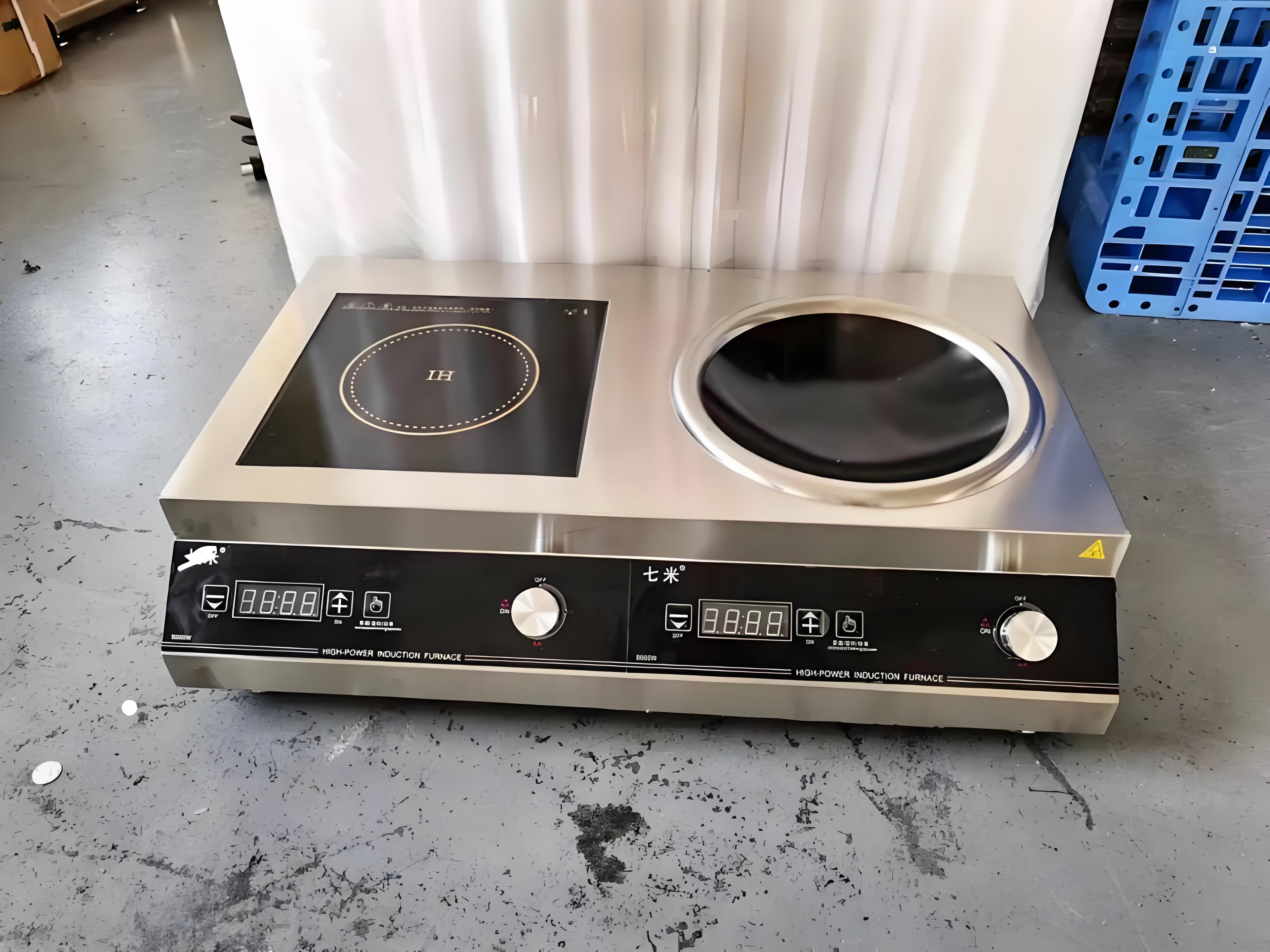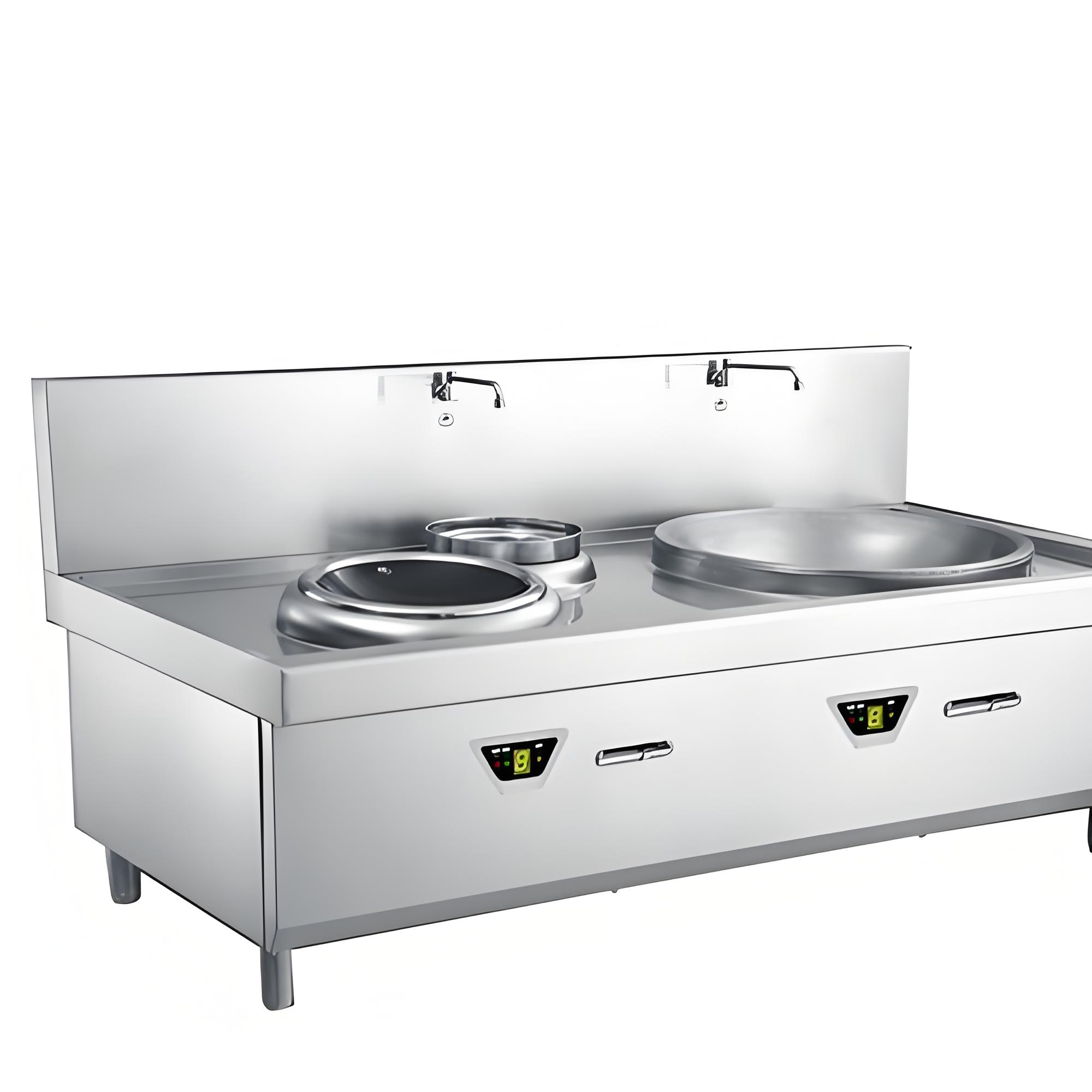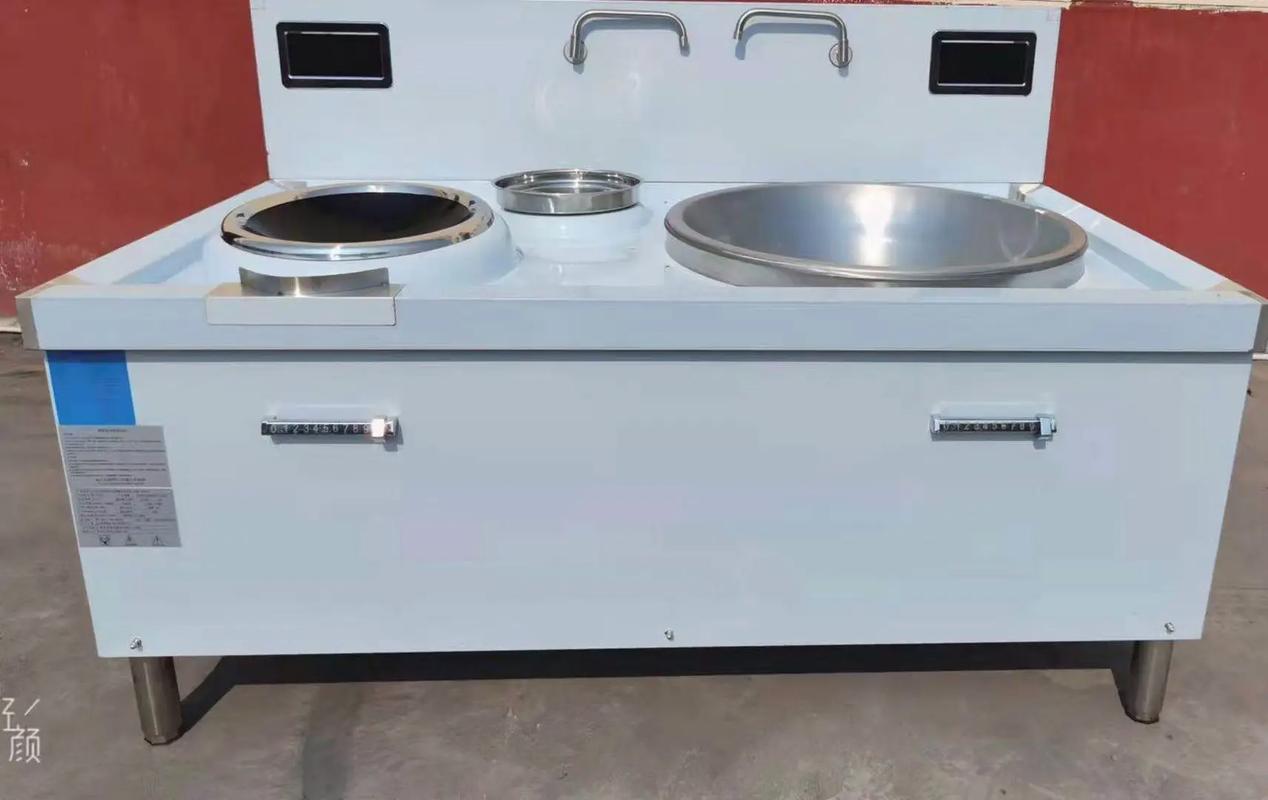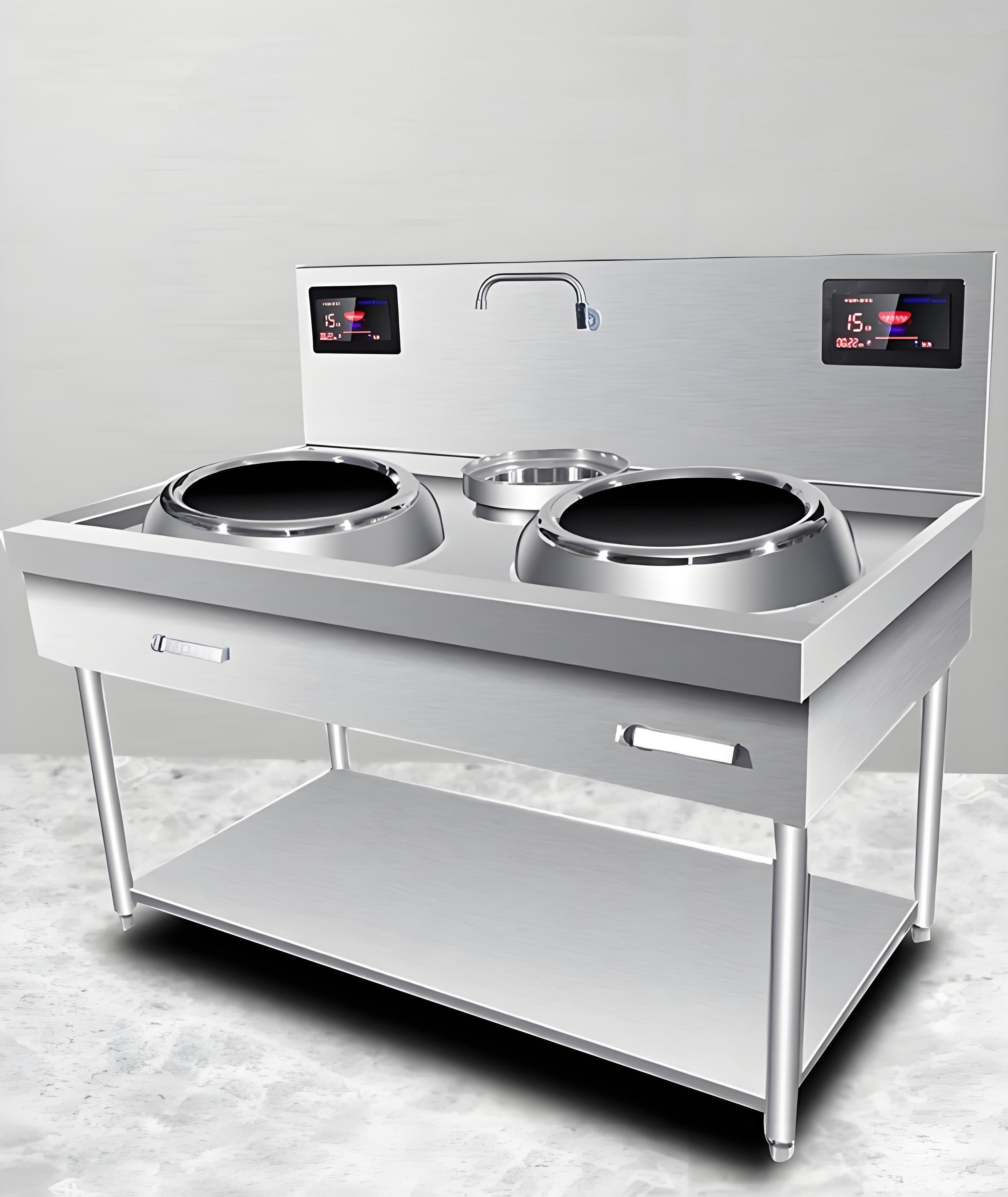Having worked in the commercial kitchen equipment industry for over a decade, I’ve seen firsthand how commercial induction cookers have transformed modern kitchens. From high-end restaurants to fast-paced catering operations, these machines are game-changers, offering precision, speed, and safety that traditional gas or electric stoves can’t match. But there’s one question I hear all the time from chefs, restaurant owners, and procurement managers: Why do commercial induction cookers cost so much? The price tags—often ranging from $500 to over $15,000—can feel daunting, especially for small businesses or startups. In this article, I’ll break down the factors driving these costs, drawing on my experience installing and maintaining these units, to help you understand what you’re paying for and why it’s often worth every penny.

The Technology Behind Induction Cooking
To understand the price, you first need to grasp how induction cookers work. Unlike gas stoves that rely on open flames or electric ranges that use heating coils, induction cookers use electromagnetic fields to heat cookware directly. A copper coil beneath a glass-ceramic surface generates an alternating magnetic field, which induces a current in ferromagnetic cookware (like cast iron or stainless steel). This current creates heat within the pan itself, not the cooktop, making it incredibly efficient—often 90-95% energy-efficient compared to 40% for gas.
This technology isn’t cheap to produce. The core components—high-quality copper coils, advanced circuit boards, and digital control systems—are precision-engineered to handle the intense demands of a commercial kitchen. I remember installing a Vollrath 4-series induction range for a client, and the internal wiring alone was a marvel of engineering, designed to withstand constant high-power use. These components drive up manufacturing costs, but they’re essential for delivering the performance chefs rely on.
Key Factors Driving the Cost of Commercial Induction Cookers
Let’s dive into the specific reasons why these cookers come with a premium price tag. From my years of working with brands like Spring USA, Hatco, and Fagor, I’ve seen how each element contributes to the cost—and the value.
1. High-Quality Materials and Components
Commercial induction cookers are built to last in demanding environments. The materials used are a big part of why they’re expensive:
Glass-Ceramic Surface: The cooking surface is typically 5mm-thick tempered glass, often 25% thicker than consumer models, designed to resist impacts and thermal shock. This durability is critical in a busy kitchen where pots are slammed down repeatedly.
Copper Coils: High-grade copper is used for the induction coils, ensuring efficient energy transfer and longevity. Cheaper coils might save money upfront but fail under heavy use.
Electronics: Advanced circuit boards, often with Infineon IGBT modules from Germany, provide precise control and reliability. These components can increase costs by 35-50% but reduce failure rates by up to 80%.
In one project, a client opted for a budget model with lower-grade components. Within six months, the unit started overheating during peak hours, costing them more in repairs than a higher-end model would have. Quality materials are a non-negotiable investment for commercial use.
2. Advanced Features and Technology
Commercial induction cookers are packed with features that justify their price:
Digital Controls and Sensors: Many units, like the Breville PolyScience Control °Freak, offer single-degree temperature control (e.g., 86°F to 482°F), ideal for precise tasks like sous-vide or tempering chocolate.
SmartScan Technology: Brands like Spring USA use proprietary tech to adjust power output based on pan size and material, ensuring optimal performance and safety. This feature alone can add $200-$500 to the cost.
Automatic Shut-Off: Most commercial models shut off automatically if no pan is detected, reducing energy waste and enhancing safety. This requires sophisticated sensors, which aren’t cheap.

High Power Output: Commercial units range from 3kW to 25kW, with higher power models (15-25kW) costing $5,000-$15,000 due to their ability to handle large-scale cooking for Michelin-starred restaurants.
I once helped a fast-food chain install 8kW induction hobs, which boosted their serving speed by 30% compared to gas stoves. The upfront cost was high, but the efficiency gains paid off within a year.
Here’s a table summarizing how power impacts cost:
|
Power Range |
Typical Use |
Price Range |
Key Features |
|---|---|---|---|
|
3-5kW |
Small cafes, food trucks |
$400-$1,500 |
Basic digital controls, single burner |
|
8-12kW |
Fast-food chains, medium restaurants |
$1,200-$3,000 |
Multi-burner, advanced sensors |
|
15-25kW |
High-end restaurants |
$5,000-$15,000 |
Precision controls, high durability |
3. Research and Development Costs
Manufacturers like Vollrath and Fagor invest heavily in R&D to stay ahead in the competitive kitchen equipment market. This includes developing energy-efficient designs, smart technology integration, and safety features that comply with strict regulations. According to industry reports, R&D can account for 10-20% of a cooker’s price.
For example, creating a unit that can maintain consistent low temperatures for delicate sauces without burning them requires extensive testing. I’ve seen chefs rely on these features to perfect dishes that would be impossible on gas stoves, but that precision comes at a cost.
4. Durability for Commercial Use
Unlike home cookers, commercial induction units are built for continuous, heavy-duty operation. A typical restaurant might run its cookers for 12-16 hours daily, seven days a week. This demands:
Stainless Steel Bodies: These resist corrosion and are easy to clean, but they’re pricier than plastic or aluminum.
Reinforced Frames: To handle heavy cookware (e.g., 50-pound woks) without cracking.
Cooling Systems: High-powered fans prevent overheating, adding to the cost but ensuring longevity.
I recall a catering client who ran a 4-burner induction range non-stop during a wedding season. The unit’s robust build kept it going without a hitch, unlike a cheaper model that might have burned out.
5. Energy Efficiency and Long-Term Savings
While the upfront cost is high, induction cookers save money over time. They use up to 50% less energy than gas stoves and 10% less than electric ranges, thanks to direct heat transfer. In a commercial kitchen, where utility bills can run into thousands monthly, this is a big deal.
For example, a Japanese restaurant I worked with reported a 35% reduction in energy costs after switching to an 8kW induction range. The initial $2,500 investment paid off in under two years through lower bills and fewer ventilation system upgrades.

6. Safety and Compliance with Regulations
Commercial kitchens face strict regulations, and induction cookers are designed to meet them. Features like automatic shut-off, no open flames, and cool-to-touch surfaces reduce fire risks and comply with environmental standards, especially in cities with tight emission rules.
These safety features require advanced engineering, which drives up costs. For instance, Spring USA’s SmartScan technology adjusts power for voltage fluctuations and shuts off after 2 minutes of non-use, a feature that adds to the price but prevents accidents.
7. Limited Cookware Compatibility
One hidden cost is the need for ferromagnetic cookware (e.g., cast iron or stainless steel). Non-magnetic materials like aluminum or glass won’t work, forcing restaurants to invest in new pots and pans. While you can use an induction disc to adapt non-magnetic cookware, it reduces efficiency and adds to the budget.
I once advised a client to test their existing cookware with a magnet before buying a $3,000 induction range. Half their pans weren’t compatible, so they budgeted an extra $500 for new ones. This is a cost many overlook when calculating the total investment.
8. Installation and Infrastructure Costs
Commercial induction cookers often require dedicated circuits (e.g., 240V, 40-50A) and sometimes three-phase power, which can cost $300-$1,000 to install. Older kitchens may need panel upgrades or new wiring, adding to the expense. In one project, I helped a restaurant rewire their kitchen for a 12kW induction range, which cost $800 but ensured safe, reliable operation.
Comparing Costs: Induction vs. Gas vs. Electric
To put things in perspective, let’s compare commercial induction cookers to gas and electric alternatives:
|
Cooker Type |
Initial Cost |
Energy Efficiency |
Maintenance Costs |
|---|---|---|---|
|
Induction |
$500-$15,000 | 90-95% |
Low (no flame, easy to clean) |
|
Gas |
$300-$5,000 | 40% |
High (ventilation, gas line maintenance) |
|
Electric |
$400-$7,000 | 75% |
Moderate (coil replacement, cleaning) |
While gas stoves are cheaper upfront, their lower efficiency and higher maintenance (e.g., gas line inspections, ventilation systems) often make induction more cost-effective over time.
Why the Investment Is Worth It
Despite the high cost, commercial induction cookers offer unmatched benefits. I’ve seen kitchens transform after switching to induction:
Speed: They heat up 30% faster than gas, reducing prep time.
Precision: Chefs can fine-tune temperatures for delicate dishes, like sauces or chocolate, without burning.
Safety: No open flames mean fewer burns and fire risks, a huge plus in high-pressure kitchens.
Cleanliness: The smooth glass surface is easy to clean, saving staff time.
Cooler Kitchens: Less ambient heat improves working conditions, especially in summer.
One of my favorite experiences was helping a small bistro install a countertop induction cooker for display cooking. The chef loved how it kept the dining area cool and safe while wowing customers with live cooking demos. The $1,200 unit paid for itself in customer satisfaction and energy savings within months.

Tips for Managing Costs
If the price of a commercial induction cooker feels overwhelming, here are some strategies I’ve shared with clients:
Start Small: Opt for a single-burner countertop model (e.g., Avantco IC35DB, ~$500) for smaller operations or testing induction.
Check Warranties: Look for units with 1-2 year warranties or overnight exchange policies, like Spring USA’s, to reduce repair costs.
Buy Compatible Cookware: Test your pans with a magnet to avoid extra purchases. Cast iron and stainless steel are usually safe bets.
Consider Energy Rebates: Some regions offer rebates for energy-efficient appliances, which can offset the cost.
Shop Around: Sites like WebstaurantStore often have better prices than Amazon for commercial units.
The Future of Commercial Induction Cooking
As technology advances, I’m seeing induction cooker prices gradually decrease. Manufacturers are finding ways to streamline production without sacrificing quality, and competition is driving innovation. For example, brands like AT Cooker are offering customizable units that balance cost and performance for specific kitchen needs.
In the coming years, I expect induction to become the standard in commercial kitchens, especially as energy costs rise and environmental regulations tighten. Restaurants that invest now will be ahead of the curve, reaping the benefits of efficiency and safety while their competitors play catch-up.
Final Thoughts
The high price of commercial induction cookers reflects their advanced technology, durable materials, and specialized features tailored for demanding kitchens. From my years of installing and troubleshooting these units, I can say the investment often pays off through energy savings, faster cooking, and safer operations. If you’re considering induction for your restaurant or catering business, weigh the upfront cost against the long-term benefits. With the right model and proper installation, you’ll not only elevate your kitchen’s performance but also create a better environment for your staff and customers.

Frequently Asked Questions
Q: Are commercial induction cookers worth the high cost?
A: Absolutely, for most commercial kitchens. They offer 90-95% energy efficiency, faster cooking, and safer operation compared to gas (40%) or electric (75%) stoves. The upfront cost is offset by lower utility bills and maintenance over time.
Q: Why do I need special cookware for induction cookers?
A: Induction cookers require ferromagnetic cookware (e.g., cast iron, stainless steel) because they use magnetic fields to generate heat. Non-magnetic materials like aluminum or glass won’t work unless you use an induction disc, which reduces efficiency.
Q: Can I use a commercial induction cooker in a small kitchen?
A: Yes! Countertop models like the Avantco IC35SU ($500-$700) are compact and perfect for small spaces, food trucks, or catering. They’re portable and don’t require extensive wiring upgrades.
Q: How do installation costs affect the total price?
A: Installation can add $300-$1,000, depending on your kitchen’s electrical setup. High-power models may need a 240V or three-phase circuit, which could require new wiring or a panel upgrade. Always hire a licensed electrician to ensure compliance.
Q: Are there cheaper alternatives to high-end brands like Vollrath or Spring USA?
A: Yes, brands like Winco or Avantco offer budget-friendly models ($400-$1,500) with decent performance for smaller operations. However, they may lack advanced features or durability compared to premium brands.





